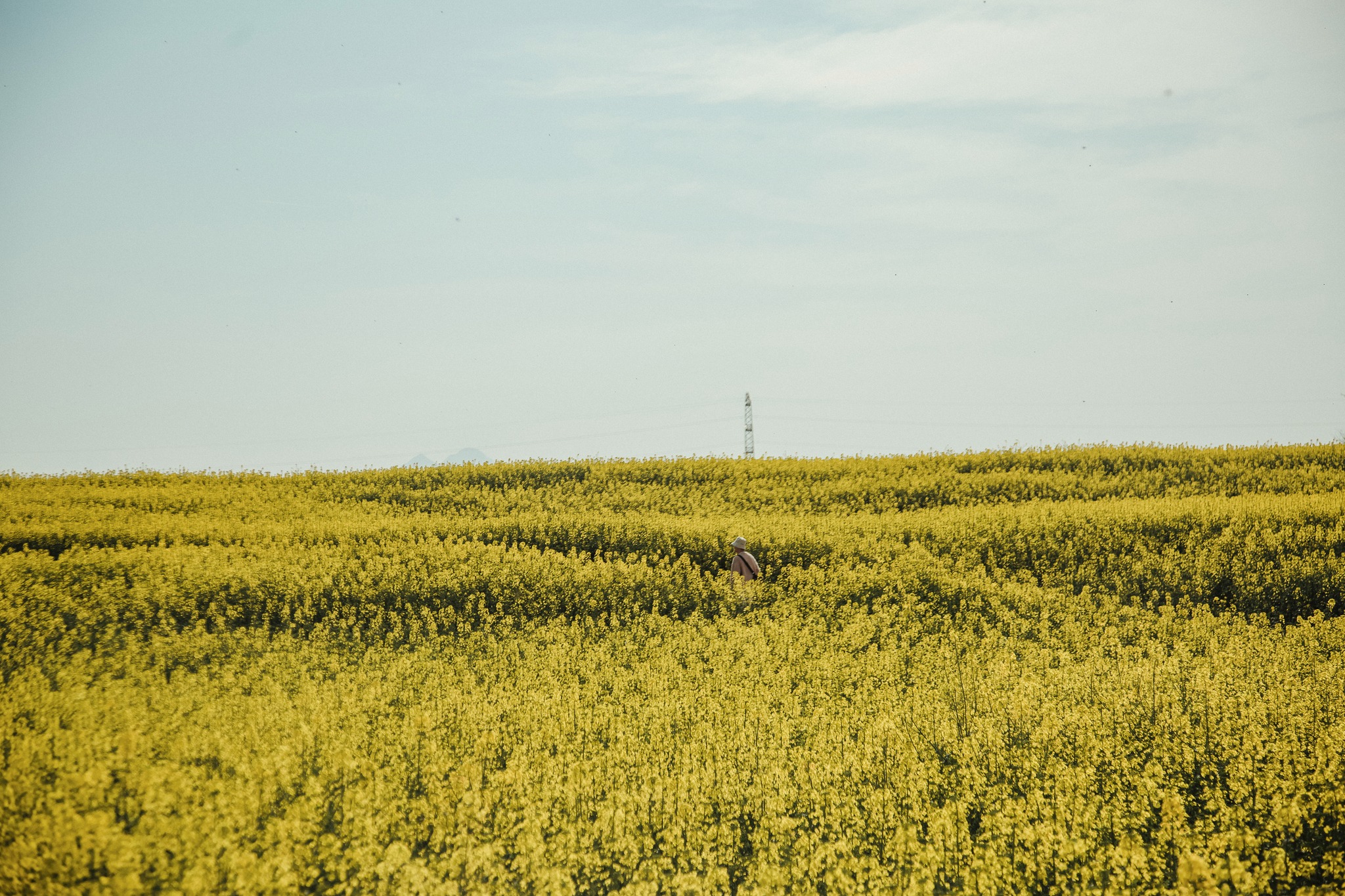I first heard about Luoping in a whisper. A passing mention on a Chinese travel forum. A blurry photo of yellow hills stretching beyond what seemed geologically possible. I zoomed in. “Rapeseed fields,” it said. “Only in early spring.” I was hooked.
I didn’t plan this trip like I usually do. No long itinerary. No bucket list. Just a craving for color, countryside, and a pause from the screens and cities. Luoping, tucked away in Yunnan province’s eastern corner near the Guizhou border, sounded like the perfect escape. I booked a train from Kunming, packed light, and went in search of golden waves.
The Journey In: A Landscape Slowly Changing
China’s high-speed trains are miracles. One moment you’re in a bustling metropolis, the next—gone. I boarded in Kunming, China’s “Spring City,” and watched as concrete softened into terraced hills, forested ridges, and dusty villages strung together by dirt roads and red-earth fields. After about 3 hours, I arrived in Luoping County.
The first breath I took felt different. Cleaner. Crisper. As if the land had been steeped in mountain tea.
Luoping Town itself is small and functional. It’s not polished for tourists like Lijiang or Yangshuo. It’s real. Tractors sputter down streets. Locals carry baskets instead of bags. Life feels refreshingly unhurried.
I checked into a guesthouse run by a couple who didn’t speak English but smiled like we were long-lost friends. The walls were paper-thin, the bed was hard, and there was hot water only after 6pm. But out the window, the sky melted into hills freckled with yellow. I slept early, excited like a child on Christmas Eve.
Seas of Rapeseed: The Fields of Jinji
My first full day began before sunrise.
Jinji Feng (Golden Rooster Peak) is the postcard of Luoping, and it deserves every frame. A local tuk-tuk driver named Lao Chen took me up winding roads that hugged the ridgeline. We arrived just as the sky was hinting pink.
And then—gold.
Imagine endless fields of canola flowers (rapeseed), blooming in buttery yellow waves that spill across karst mountains like spilled paint. These stone hills rise like dark shark fins from the earth, giving the scene a surreal, Dr. Seuss-meets-Van Gogh kind of wonder.
Photographers were already camped out with tripods. Drones buzzed softly above. But I just stood there, stunned. The breeze carried the faint scent of flowers. Birds flitted across the valley. It was… dreamlike.
As the sun rose, the fields lit up, the dew evaporated, and the colors deepened into something more golden than yellow. Every direction I turned looked like a living oil painting.

A Morning Among the Bees
Later that day, I walked through the fields.
The sound of bees was constant—a low, pleasant hum that never stopped. Beekeepers dotted the landscape with small wooden boxes, their hives stacked neatly like drawers. I met one old man who invited me to taste fresh honey on a flatbread. It dripped sticky and warm. He called it “liquid spring.” I believed him.
I wandered for hours, stopping to chat with villagers who were surprisingly open to this solo foreign traveler. Some let me watch them harvest greens. Others offered tea. A young girl tried to practice her English by reciting all the colors she knew—”Yellow, green, red, sky, golden flower, sun.”
I didn’t correct her. It was perfect.
Nine Dragons and Stone Forests
On my second day, I visited Jiulong Waterfalls—Nine Dragons cascading down a forested gorge. It’s a short ride from the town and well worth the early start.
Unlike the flat, floral dream of Jinji, Jiulong is about sound and movement. The main waterfall crashes into a jade pool with force and beauty, and the path that winds around it gives multiple views, each more photogenic than the last. I climbed a slippery side trail for a top-down perspective and sat there for an hour with my feet dangling over the cliff edge, munching on a baozi I’d packed from town.
Later, I explored the Duoyi River scenic area. Bamboo rafts drift slowly down crystal waters, past Miao and Buyi minority villages that feel like they exist outside of time. I saw women washing vegetables in the river, roosters wandering freely, and kids jumping barefoot from rocks. No one stared. No one asked me to buy anything. They just let me be there.
Sunset at Snail Fields
On my final evening, I joined a few other travelers at Luositian—Snail Field.
Named for its spiraling pattern of terraced canola farms, Luositian is best seen from above. The sun dipped low, and the shadows stretched, creating waves of gold and green that looked almost pixelated from afar.
It was silent. Nobody spoke. Even the bees seemed to hush.
I thought about how far I’d come—not just physically, but emotionally. I had left behind the push and pull of deadlines, of endless scrolling and swiping. Here, I remembered what it was like to watch light change slowly, to feel grass between your fingers, to smile without reason.

What Luoping Taught Me
Luoping isn’t flashy. There are no mega-resorts, no Starbucks, no Instagrammable signs telling you where to stand. But that’s the gift.
It taught me:
- That beauty doesn’t shout. Sometimes it hums quietly in yellow tones.
- That spring isn’t just a season, it’s a feeling.
- That even in a country as vast and fast-moving as China, slowness still exists.
Final Notes
If you’re thinking of going:
- Best time to visit: Late February to mid-March when the rapeseed flowers are in full bloom.
- Getting there: Take a high-speed train or bus from Kunming to Luoping (about 3–4 hours).
- Stay: Choose a local guesthouse to feel the rhythm of the town.
- Bring: Layers (mornings are chilly), good walking shoes, and a willingness to slow down.
I left Luoping with pollen on my boots and sunlight in my heart. If you ever need to remember what spring feels like—not just looks like—go. Let the golden fields do their quiet magic.
— With love and yellow on my mind,
A traveler who fell in love with the flowers

